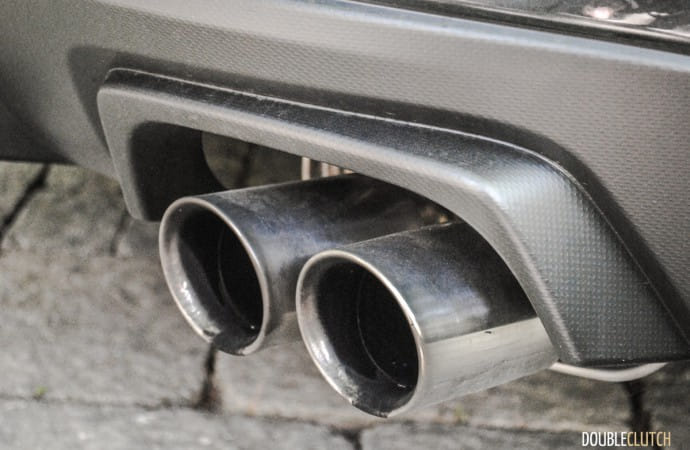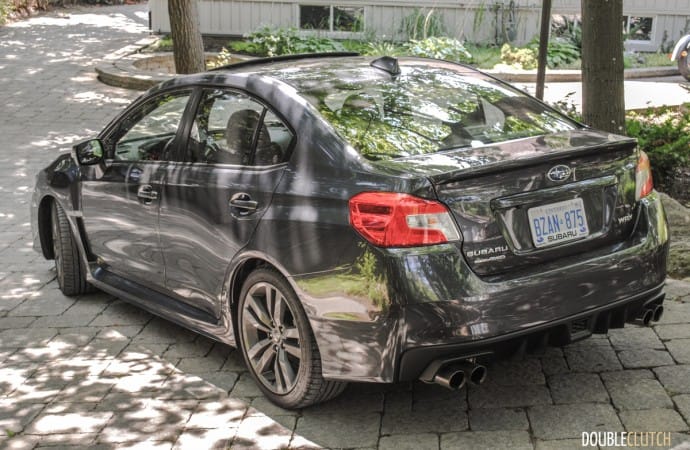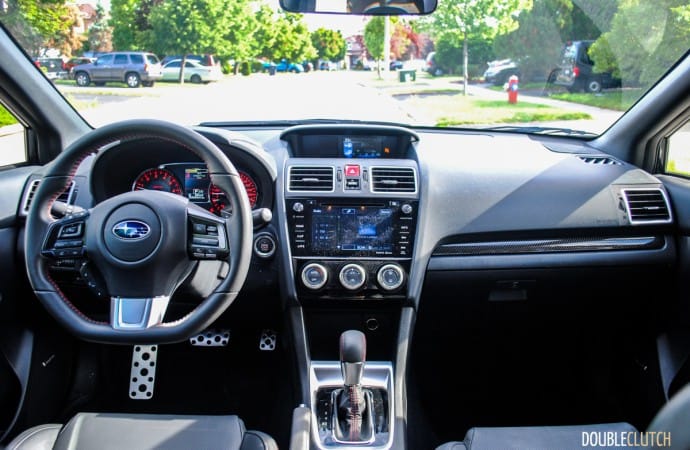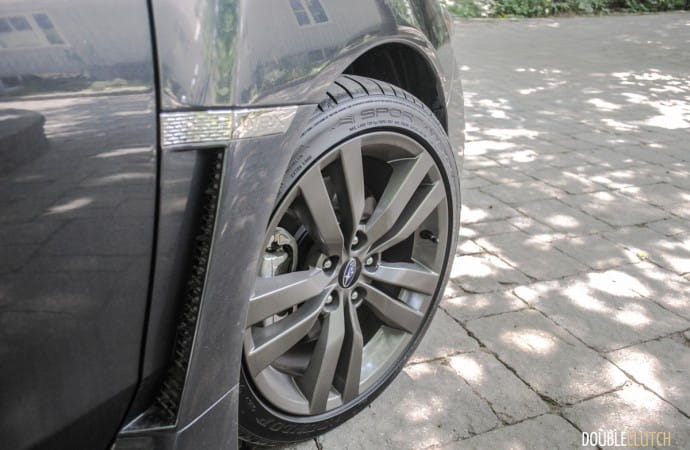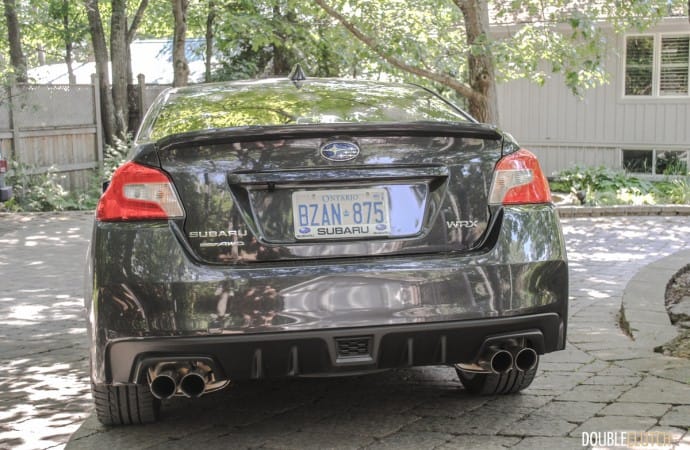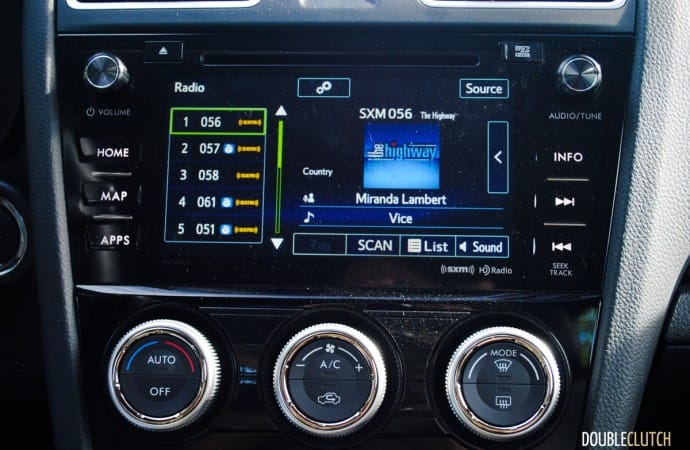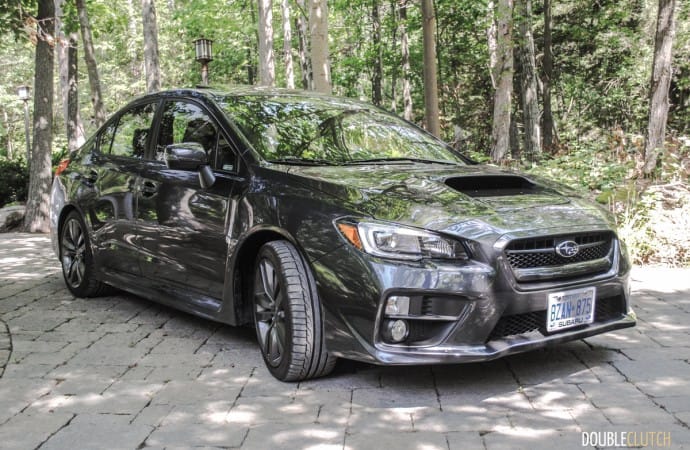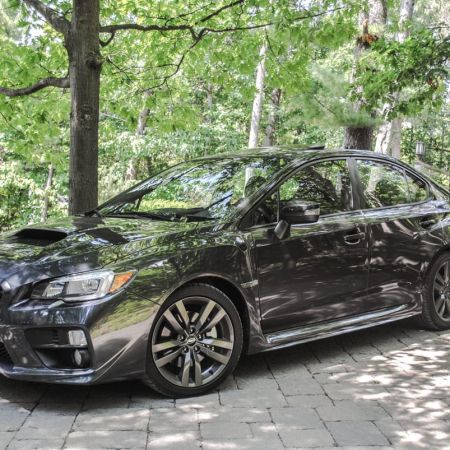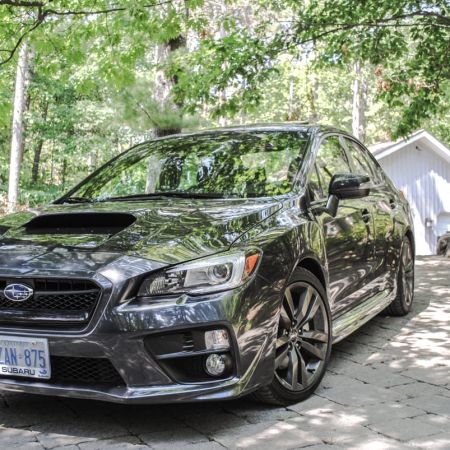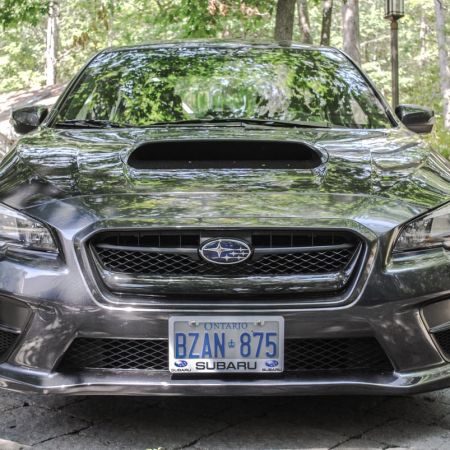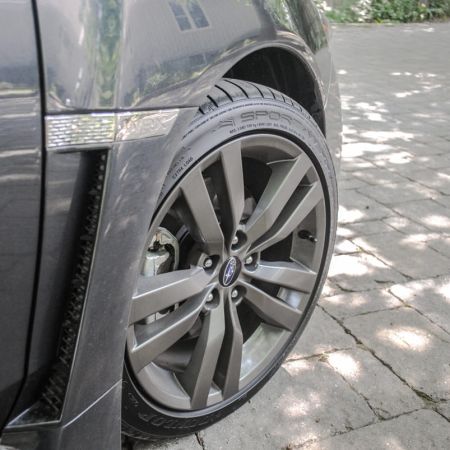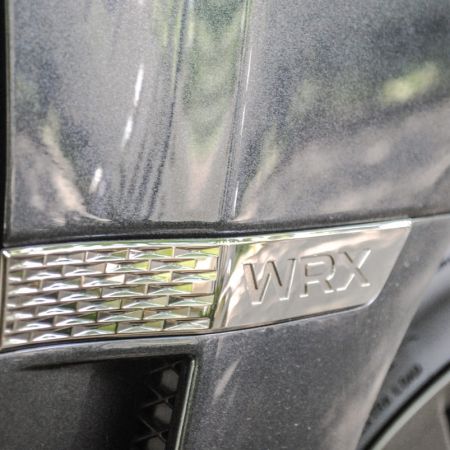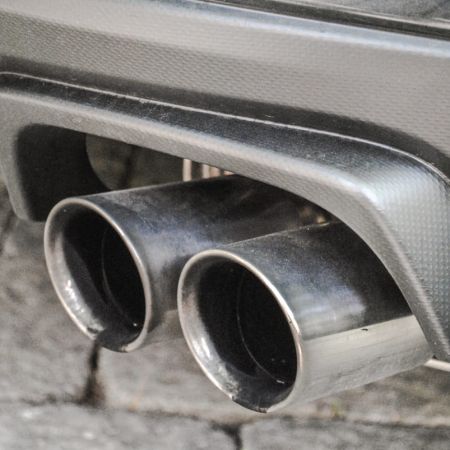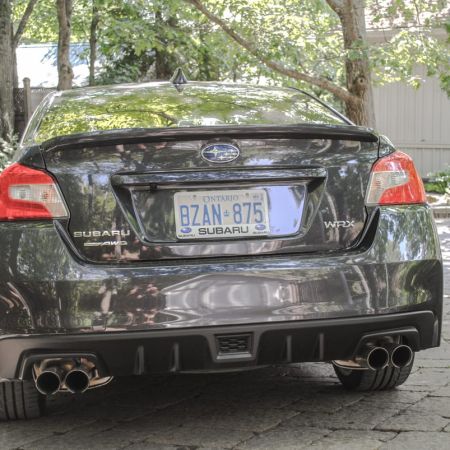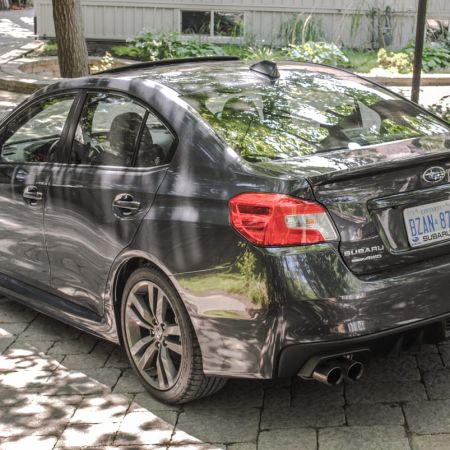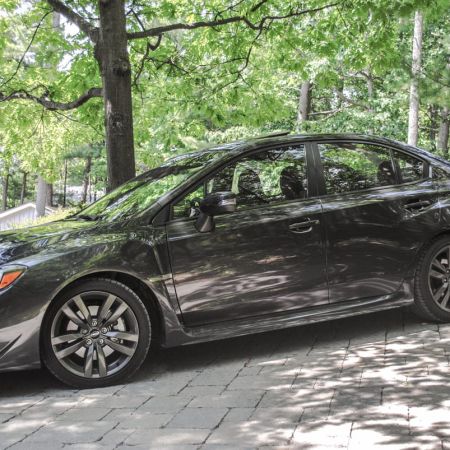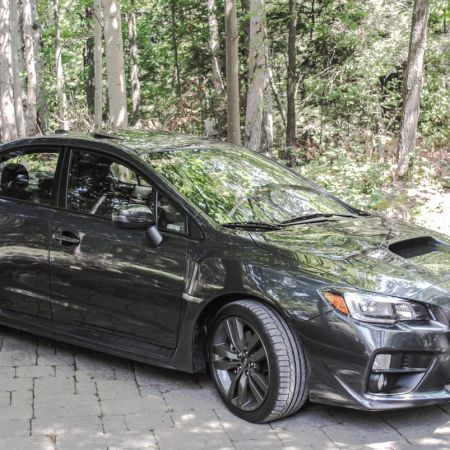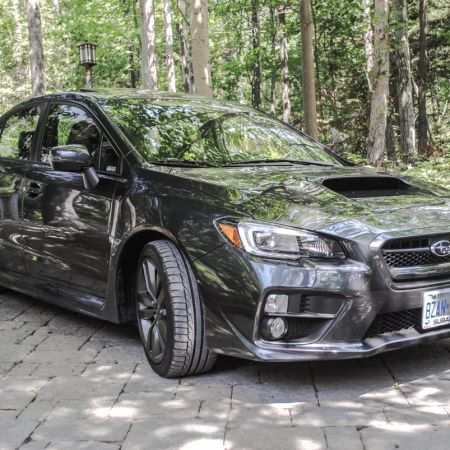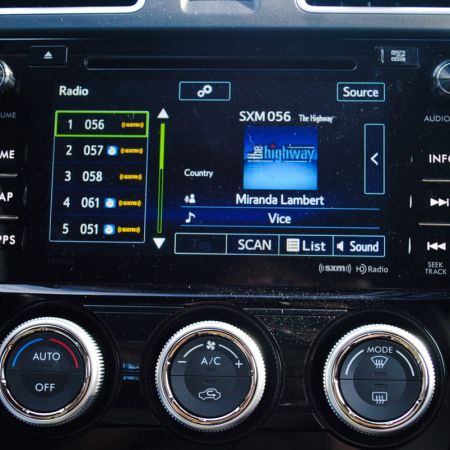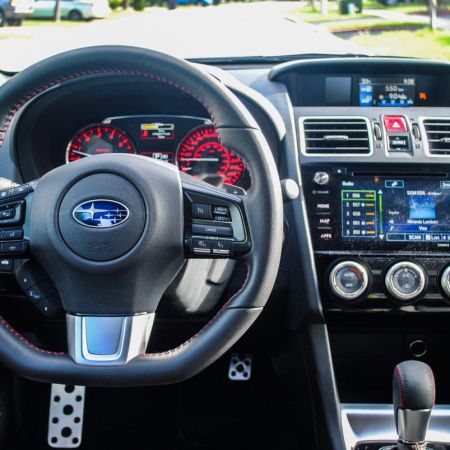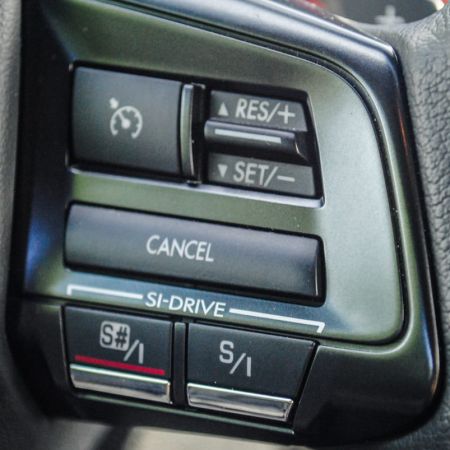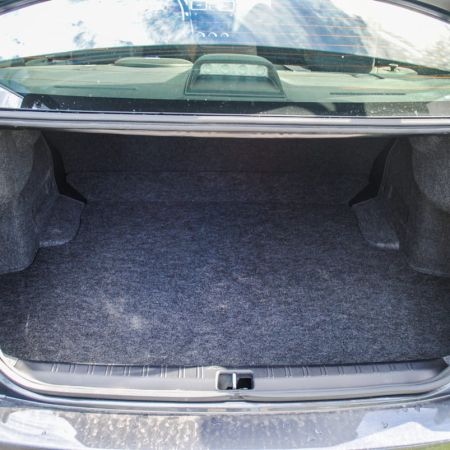Despite having been reviewing cars for half a decade now, I have yet to spend any significant time behind the wheel of Subaru’s iconic WRX. That’s a bit of an issue since the WRX, and its hyped up sibling, the STI (reviewed here), have become benchmark cars in the affordable performance car category. The WRX has gained a massive cult-like following among enthusiasts for delivering cheap thrills with its rev-happy turbo charged boxer 4-cylinder engine, infamous Subaru symmetrical AWD and aggressive corner carving ability. To make sure I got a chance to really get to know the latest WRX, the folks at Subaru Canada arranged for me with spend a week with a top of the line 2017 Subaru WRX Sport-Tech.
Finished in a tasteful Dark Grey Metallic, my test car represents the highest trim level of the WRX, without stepping up into the even higher-performance STI model. That means it has toys like the larger 7” touch screen StarLink infotainment, navigation, satellite radio, Harman Kardon 9-speaker 440W sound system, proximity key and heated leather seating. On the outside, the Sport-Tech gets LED headlights and unique 18” Enkei rims wrapped in wide Dunlop Sport Max performance rubber.
The only option left to choose is the transmission, where you get your pick of a traditional six-speed manual or the Sport Lineartronic CVT with a simulated manual mode and paddle shifters. My particular test car came with this automatic. Couple that with that fact that this car is equipped with all the Sport-Tech gadgets and you’ve got a car optioned out to be a very livable daily driver, which of course can still be a blast to drive. Personally, if I were choosing a WRX, this is very likely how I’d option mine out, right down to the color.
The nice thing about the WRX’s styling is that it matured enough over the years that it doesn’t have to be as “in your face” as it once was. To the untrained eye, my grey test car looks a lot like a typical mid-sized sedan. It’s only when you notice the signature hood scoop, front fender flares and aggressive looking wheels and tires that the WRX starts to look more like the performance vehicle that it is. Where it becomes really obvious that the WRX is different from your average economy sedan is when you experience the WRX from the inside.
This is seriously sporty car, and it makes no apologies for that with a ride that’s noticeably rough and a cabin that is intruded by wind, tire and exhaust noise to a point where I found myself turning the radio up and down depending on my speed. In the city, the WRX is particularly rough over potholes and expansion gaps, whereas it smooths out and feels more at home on the highway or rural back roads.
After a long commute home from work in the WRX with my wife she turned to me and said “I think this car is much better experienced from the driver’s seat”, and she was exactly right. When you’re behind the wheel of the WRX the hard seats, the fact that it rides like a dump truck and the noises entering the cabin are all quickly eliminated from your thoughts. The car has a way of drawing you in to focus on the driving.
The steering is perfectly weighted and extremely responsive with a nice sharp turn-in; and as a bonus, the turning radius is fairly tight, unlike some other affordable performance cars (I am looking at your Ford Focus RS). For me, the handling of the WRX is where the real attraction lies. The steering, chassis and symmetrical AWD all come together to deliver one hell of an engaging, confident and very capable corner-carver. It’s phenomenal.
Power isn’t exactly forgotten on the WRX either, now powered by the new 2.0L four-cylinder boxer engine with an intercooled twin-scroll turbocharger. The engine takes in massive amounts of air through the signature hood scoop and passes it directly in, to be converted into 268 horsepower and 258 lb-ft of torque. The 2.0L behaves as expected for a heavily boosted 4-cylinder; it’s incredibly powerful through a narrow rpm range (in this case about 2500-4000RPM), but outside of that power band it exhibits some lag. The good news here is that the Sport Lineartronic transmission does a fairly good job of keeping the car within that powerband, but it’s not.
The transmission keeps the RPMs between 2500 and 3000 while cruising on the highway. This is typically a little high for my preference, but it does allow for some incredibly brisk and effortless passing when needed. The WRX’s rear is flanked by four big exhaust tips that sing the flat-toned song of the boxer engine. However, the exhaust seems loud at idle, loud inside the car, and quiet outside the car while accelerating. Personally, I’d prefer the opposite, loud under load and quiet on the highway.
Even with the addictive driving experience working to increase the weight of my right foot, and all of the WRX’s boosted power and high revving attitude I still managed to average just 9.5L/100km in a week’s worth of rush hour commuting. That’s better than I expected, and it helps to make a case for this car as a fun, practical and reasonably efficient commuter car, provided you can live with the harsh ride.
As the summer starts to wind down I always try to take a least one weekend to head up north from the city to hit up some of our favorite beaches. That weekend happened to align with my time with the WRX, and what better vehicle to spend a weekend blasting down into the countryside with. The trip allowed me to put good use to the LED headlights. The crisp sightlines do a good job of lighting the roads, making it easy to watch for animals. The sustained speeds helped to push my fuel consumption down and really helped to cement the idea in my mind that this is one of the better driving cars available on the market today.
Speaking of price, my tester came in at $37,395, which is as expensive as it’ll get without getting into STI (reviewed here) territory. At $37,000 it’s difficult to think of anything that would be more fun yet as practical as the WRX. Even if it’s noisy and rough, it still has some very usable back seats, a nice big trunk, and all the electronic luxuries you might want. My only other complaint would be in regards to the overall interior fit, finish and design. This has always been a weak point for Subaru, and they’ve slowly been improving, but I definitely found some obvious areas for improvement in the WRX.
For one, the right side speaker grill on the dashboard kept popping itself up, there’s a visible foam insulator between the dash and the windshield, the center console armrest is way too low to be useful and the materials used on areas like the door panels and center stack look and feel cheap. I totally understand that to hit these price points and the levels of performance this car reaches, sacrifices have to be made. In that respect, I am okay with the cheaper materials, but simple design faults like the center console and faulty speaker grill could easily have been addressed.
I thoroughly enjoyed my time with the WRX and I already miss its presence. Tossing this car through some quick corners is an experience I waited too long for, and I am glad I finally got a chance to understand why these cars are so highly regarded in certain circles. That said, the 2017 Subaru WRX Sport-Tech isn’t a car you buy blindly. To own a WRX and enjoy it, you need to understand that you’re making sacrifices in name of the joy of driving. It’s not a refined touring sedan, it’s a performance car with a couple of extra doors, and if that’s what you’re looking for, the WRX is your ticket.

